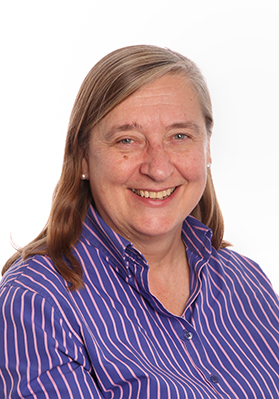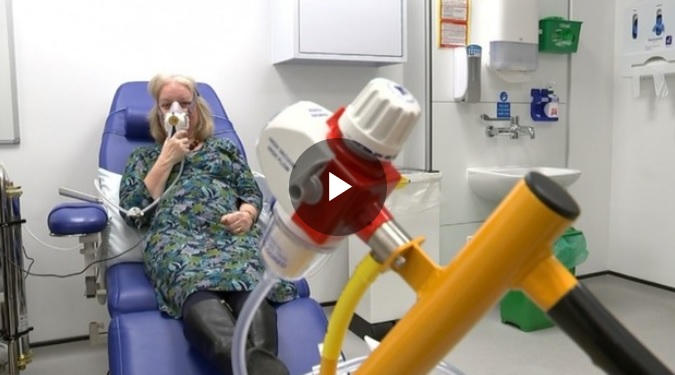Reducing the risk of Type 2 Diabetes
Working with researchers in Leicester, they recruited 1,368 people – including more than 300 of south Asian ethnicity – to take part in the NIHR-funded PROPELS study.
Study participants all had blood glucose (sugar) levels that were higher than normal, and this put them at risk of developing T2D.
Participants were allocated to one of three groups. The first group received detailed advice on how to reduce their risk of T2D. The second group received the same information, a pedometer (step counter), encouragement to walk 2,000-3,000 steps more each day and an annual 4-hour education programme about diet and physical activity. The final group received all this plus follow-on support through personalised text-messaging and telephone calls to encourage behaviour change and monitoring of physical activity by a pedometer.
After 12 months and then again at 4 years, participants provided blood samples and their physical activity was measured. The data is being analysed and the results should provide new evidence for the long-term effectiveness of a tailored programme to reduce T2D risk in high-risk groups.
Reviewing the NHS Health Check programme
The NHS Health Check programme offers people information on how to reduce their risk and/or early treatment. Many of the recommended lifestyle changes also lower the risk of other diseases, such as cancer and lung disease.
Under the current ‘one size fits all’ guidelines, the checks are available to all apparently healthy people every five years until they reach 75. However, within this group some will be at higher risk of future disease and may benefit from earlier and more frequent health checks – while those at lower risk will need fewer checks.
To identify people with greatest health needs, researchers have been developing methods to use data from electronic health records (which all patients have), including measurements of the “risk factors” that are known to be linked with greater risk of disease. These include smoking, being older, being overweight, and having high blood pressure and high cholesterol.
GPs will be able to use this tool to estimate when individuals should next be invited for an NHS health check. This may help increase the cost-effectiveness of the programme while directly benefiting those at highest risk of future disease.
Predicting the breech baby
A baby is ‘breech’ when they have not turned to a ‘head down’ position for birth. When breech babies are spotted in the final stages of pregnancy, clinicians will attempt to turn the baby safely ready for a vaginal birth. Babies remaining in the breech position are usually delivered by caesarean to avoid the risks of breech delivery. However, not all breech babies are discovered before delivery under standard care.
Researchers wanted to investigate whether providing an extra scan late in pregnancy will help identify babies who are in a breech position earlier and reduce the risk of complications before labour or the number of emergency caesareans. Nearly 4,000 pregnant women were invited to have an extra ultrasound at 36 weeks. Almost 5 per cent of babies were found to be breech and in about half of these cases the baby had been thought to be in a head first position. Identifying these previously undiagnosed cases enabled clinicians to intervene or plan for a caesarean section. On day of delivery, there were no undiagnosed breech deliveries by women participating in the study. Women whose scans showed their baby was breech had their baby turned or delivered by planned caesarean.
Researchers used the Cambridge data to estimate what might happen if such a scan was introduced nationally. They showed that it could prevent ~4000 emergency caesareans each year in the UK and prevent 5-10 baby deaths. The findings led to questions in Parliament and the research team is working with the NHS makers policy to construct the case that late pregnancy ultrasound is part of normal care for pregnant women.
How do our genes affect our weight
Researchers in Cambridge have discovered genetic variants (small changes in DNA) that help protect people from obesity, type 2 diabetes and heart disease. These findings could help researchers to develop drugs for people who have weight problems.
Obesity is a serious problem; it can lead to heart disease, type 2 diabetes, stroke and mobility problems.
Cambridge researchers studied a gene called ‘MC4R’ which is known to regulate weight by acting like an ‘off’ switch for appetite. By looking at samples from half a million volunteers in the UK, they found that in naturally lean people small changes in the MC4R gene were able to limit their appetite to prevent weight gain. They also found that some people had a version of the gene that defended against the risk of diseases associated with obesity such as type 2 diabetes and heart disease.
These findings help explain the genetics of why slim people have an advantage when managing their weight. The research could now help researchers to develop new treatments to help people reduce excess weight.
Testing whether an anti-inflammatory drug can help people with depression
In a nationwide study led from Cambridge, researchers will be testing a new anti-inflammatory drug, specifically designed to reduce levels of inflammation in the brain. Patients with depression will be asked to take the new drug or a placebo (a pill that is inactive) in addition to their regular anti-depressant medication for 8 weeks.
Researchers will then measure whether the new anti-inflammatory drug reduces depressive symptoms by asking participants to complete questionnaires. They will also collect blood and saliva samples, and take images of the brain using MRI, to understand more precisely how the drug works on the immune system and the brain.
This study is currently running in Cambridge and will shortly also be open for recruitment in London, Oxford, Cardiff and Glasgow. It is due to finish in 2022.
A swift ‘kick and kill’ for the HIV virus
A new approach to wake this latent virus and destroy it ‘kick and kill’ was the approach of researchers from Cambridge, Oxford and London. Cambridge developed a novel assay to detect whether the latent virus had been depleted, without which it would be difficult to validate any curative effect.
Clinicians, virologists, immunologists and molecular biologists ran a large clinical trial to try and eradicate HIV from infected patients.
The trial which lasted three years looked at 60 men recently diagnosed with HIV. All of them showed a good response to conventional therapy, however, the ‘kick and kill’ approach was not strong enough to reduce the amount of latent virus as measured by Cambridge researchers, and other, assays.
The study however has provided a benchmark from which to trial different combinations of therapies to tackle HIV and investigate new strategies to destroy dormant virus. Meanwhile patients continue to benefit from advances in suppressive therapy which, when successful is giving them a normal lifespan.
New test to help personalise IBD medicine
IBD is a term used to describe two conditions, Crohn’s disease and Ulcerative Colitis. These lifelong illnesses mostly affect young adults and flare at intervals, producing debilitating symptoms including cramping abdominal pains, anaemia, weight loss and diarrhoea.
Previous Cambridge research showed that studying an immune cell called a CD8 T-cell could help doctors to identify which patients would go on to experience more aggressive disease and which patients would have a better outcome. This initial technical approach, however, is too complicated to be performed in routine clinical use.
Looking at nearly 70 people with the condition, the team developed a simpler blood test – using a method that is widely available in the NHS called qPCR – to identify the same patient subgroups as were found using the more complicated CD8 T-cell test.
They found the test was able to predict the strength of the condition in the patient and a patient’s likely outcome. This research can now help newly diagnosed people with IBD to identify the strength of their disease and enable their doctors to provide a personalised treatment plan – ensuring they receive the medication that is right for them, rather than a ‘one size fits all’ approach.
The research has been so successful that the test has been licenced by Cambridge Enterprise to a company, PredictImmune Ltd, who are making it available to patients in the UK to provide better outcomes, while in parallel it is being assessed by NICE to determine whether they recommend it can be used in the NHS.
How a chance meeting inspired a rare disease research project
This was the question a mum of a daughter with the rare inflammatory bone disease CRMO asked rheumatologist Dr Jagtar Singh Nijjar at the Rare Disease Day evening lecture, which took place in 2017.
Two years on, Dr Nijjar gave a talk at the 2019 Rare Disease Day evening lecture, hosted by the NIHR BioResource and the Cambridge Rare Disease Network, about what followed from that chance meeting.
Listen to this edited transcript of his talk (3:13 mins). Click to listen to the full lecture.
Cambridge researchers develop new tool to map beginnings of heart disease
Researcher Dr Dirk Paul said: “We previously discovered that certain gene variants are more common in people with heart disease. Now the challenge is to find out how exactly these gene variants contribute to the risk of heart disease.”
Using stem cells from 200 healthy volunteers, the team grew them in the laboratory into macrophages, which are specialist cells responsible for sweeping up harmful particles, such as cholesterol in the arteries.
Dr Paul said: “Macrophages are part of the biological machinery that clears away fatty material inside the arteries – but in individuals who carry these gene variants, the machinery doesn’t work properly leading to a build-up of cholesterol.
“This in turn leads to atherosclerosis, the condition that causes most heart attacks and strokes.
“We fed the macrophages with cholesterol and then studied them in minute molecular detail to see what happened. This will improve our understanding of how atherosclerosis develops.
“This new approach will help us see how the gene variants affect disease risk and translate this knowledge into new treatments.”
- This study was funded by the NIHR Cambridge BRC and the BHF Cambridge Centre of Research Excellence.
- For more information visit the Cardiovascular Epidemiology Unit – Integrative Human Genomics research web pages.
Well-planned patient preparation before their scans improves imaging quality and cancer detection rates
Multiparametric magnetic resonance imaging (mpMRI) is a special type of scan that creates more detailed pictures of the prostate. It plays an essential role in the diagnosis of prostate cancer (PCa), and can help doctors decide if tumours are clinically significant (that is, likely to impact on a patient’s life and therefore needing treatment); it is now performed in up to 75% of men with suspicion of PCa in the UK.
Existing guidelines on its use, while they address technical hardware and software and diagnostic considerations, have not to date adequately covered patient-related factors which also can affect the quality of the imaging.
This review from Cambridge radiologists Dr Tristan Barrett and Dr Iztok Caglič looked at how some simple steps can help to further optimise the image quality of mpMRI.
Before mpMRI the authors therefore recommend:
- Using antiperistaltic agents to minimise spasm in the intestines and associated movement (which can result in blurring of image)
- Asking patients to empty their bowels prior to examination to minimise image distortion
- Asking patients to refrain from ejaculation for three days before their scans
- Using an additional scan sequence called PROPELLER to improve image quality in patients with hip metalwork.
Read the full article: https://doi.org/10.1016/j.crad.2018.12.003
Patients better off accepting a ‘poorer quality’ liver than waiting for a ‘better’ one, research shows
Transplantation practice has changed dramatically in the UK in the last 10 years. For several decades, only those deceased persons who had catastrophic brain injury and were declared ‘brain-stem dead’ (BSD) were considered for donation.
More recently, increasing numbers of deceased organs are retrieved from individuals who are not brain dead but whose survival prospects are futile and who are declared dead after their heart has stopped beating (otherwise known as a ‘donation after circulatory death’, or DCD).
DCD donation now makes up about 40% of UK transplant activity – worldwide, only the Netherlands achieves similar rates.
The NIHR part-funded research analysed data covering 2008-15 from more than 5,800 patients waiting in the UK for a liver-only transplant, including 3,900 patients who had received a liver-only transplant, of which 23% were from DCD donors. The analysis showed that outcomes following DCD liver transplantation were poorer than outcomes following DBD liver transplantation, with a higher rate of failure of the DCD liver transplant leading to slightly poorer recipient survival.
However, the authors reported that if outcomes were considered from the point of listing the patient for transplantation, then it was better for the patient to accept the offer of a DCD liver rather than to defer and wait for an offer of a better ‘quality’ DBD liver.
This was because there was no guarantee of receiving that liver, and many patients died while waiting. The authors further showed that the greatest survival benefit in accepting a DCD liver offer was for those patients with the most advanced liver disease.
The research will help patients and their clinicians in their decision whether or not to accept a DCD liver offer or wait to receive a “better” liver from a DBD donor.
- Liver transplantation is the only effective treatment for end-stage liver disease and can provide an average of 17–22 years of additional life.
- Circulatory death kidneys now account for one-third of all kidney transplants: find out below how BRC-supported research in using potential DCD donors is helping to address the severe shortfall in kidney organs available for transplantation.
Expertise
Collaboration with the NIHR Cambridge BRC provides you access to world-leading academics and facilities to help you answer some of the most challenging questions in healthcare.
You can identify and contact potential academic collaborators via our research theme contact pages or through our R&D department who can put you in touch with the right team.
Our Office for Translational Research can also help you identify suitable collaborators and connect you to local networks. They can assist with identification of small- to medium-sized enterprise-eligible funding sources and development of appropriate research proposals.
Research Engaged Patients
We not only want people to take part in research – we want them to have a great experience, whether they are taking part as a patient or as a healthy volunteer.
As a major regional teaching hospital, the NIHR Cambridge Biomedical Research Centre hosts a large and diverse patient population. To support our research volunteers during research projects, we have a dedicated inpatient and outpatient spaces in the NIHR Cambridge Clinical Research Facility, where participants can take part in research in a calm and relaxing setting, away from the hospital environment, and where they are looked after by a highly trained and experienced research team.
We are grateful to all those who contribute to our research year-on-year and without them our research would not be possible. Our discoveries are their discoveries.
Latest NIHR statistics
In 2020/21, almost 1.4 million people took part in research.

Facilities
The NIHR Cambridge BRC is situated on one site, providing access to Addenbrooke’s, the Rosie and the Royal Papworth Hospitals – and their thousands of patients as well as advanced research infrastructure. We also have immediate links to our partners on the campus and the East of England.
We work with many organisations in and around Cambridge who use our facilities for their research, while we help support their discoveries. As the biomedical campus expands over the next five years, it will cement its position as one of the largest – and best – campuses in the world in which to conduct clinical research.
We invite you to view the facilities we have here at the NIHR Cambridge BRC, if you have any questions you can contact them directly or email cuh.research@nhs.net.
Can a simple breath test detect cancer?

The PAN cancer trial will ask people to breathe into a mask for 10 minutes. Researchers will then try and detect molecules called ‘volatile organic compounds’ (VOCs) to see if they can signal cancer.
The clinical trial will involve both healthy volunteers, to better understand ‘normal’ VOC levels, and patients with a suspected cancer diagnosis to look at whether the level of VOCs in their breath is different. The trial, which began in January 2019, is currently recruiting patients with oesophageal and stomach cancers but will expand to include patients with liver, prostate, kidney, bladder and pancreatic cancers.
Professor Rebecca Fitzgerald (right), Chief investigator of the trial, and co-lead for the Early Detection Programme, Cancer Research UK Cambridge Centre, said: “We urgently need to develop new tools, like this breath test, which could help to detect and diagnose cancer earlier, giving patients the best chance of surviving their disease. Through this clinical trial we hope to find signatures in breath needed to detect cancers earlier – it’s the crucial next step in developing this technology. Owlstone Medical’s Breath Biopsy® technology is the first to test across multiple cancer types, potentially paving the way for a universal breath test.”
If the trial is successful, researchers hope they can identify cancer sooner, reduce the need for invasive testing and roll this simple test out to GP’s surgeries.
The Cancer Research UK Cambridge Centre is running the PAN Cancer trial for Early Detection of Cancer in Breath in collaboration with Owlstone Medical to test their Breath Biopsy® technology.
Click below for the story from ITV News
How to confirm Research Activity in CPMS
- Guidance from the NIHR Clinical Research Network (v1.1 May 2019)
- CUH Research Activity Data: New Updates (pdf, August 2019)
- Confirming Research Activity Data: (mp4 video, 6:20mins)
Cancer treatment could save millions
The 2.6m PERSEPHONE trial, the largest of its kind and led by Professor Helena Earl (right), Cambridge researchers found 89.4 per cent of women taking six months treatment were free of breast cancer after four  years compared with 89.8 per cent of patients taking treatment for twelve months.
years compared with 89.8 per cent of patients taking treatment for twelve months.
In addition, just three per cent of women in the six month study had to stop taking the drug – also called Herceptin – because of heart problems compared with eight per cent of those who took it for 12 months.
The cost saving of a six month, rather than 12 month, treatment is estimated at £9,699 per patient and potential global savings could be in the millions annually.
The study and data from a parallel French trial will be used to explore whether there are subgroups of higher risk women for whom 12 months therapy would remain the most appropriate course.
This new evidence could change practice and will be considered by NICE and NHS England. Women currently taking the medication should not change their treatment without seeking the advice of their doctor.
World-leading genome study spells hope for sick babies
The largest study of its kind in the world, the Next Generation Children’s Project, uses whole genome sequencing that delivers results within a two to three week window in the NHS.
The study found that one in four babies had an underlying genetic condition and that in the majority of the cases, the diagnosis changed their treatment plan.
The advanced genome sequencing will help doctors identify genetic conditions in neonatal and paediatric intensive care units and enable doctors to intervene earlier, manage conditions more effectively, potentially improve outcomes and even save lives.
Importantly, parents who lose a child are more likely to be spared the agony of not knowing the full reasons why, and will be able to make more informed decisions about trying for a family again.
Proving that genomic tests are possible will have an impact on early diagnosis and treatment plans. This study will pave the way for this kind of testing to be offered nationally.
Screening and Treatment for Abdominal Aortic Aneurysm
Abdominal aortic aneurysm (AAA) is an enlargement of the abdominal aorta. It is predominantly found in men over the age of 65, and when it increases in size it can be dangerous and in some cases deadly.
Cambridge researchers led a randomised trial to see whether performing ultrasound screening would identify men likely to develop a dangerous AAA, and investigate if early screening can provide long-term benefits. This was then followed up by a further health economic assessment of AAA screening.
After inviting more than 33,000 men to ultrasound screening and analysing their results against a comparable group not invited, researchers were able to show that population screening of men over 65 could halve the number of deaths from AAA over a 10-year period.
In 2013, the Department of Health in England introduced a national screening programme for men over 65, based on the data from Cambridge researchers which helped shape their policy. A year later Wales, Scotland and Northern Ireland introduced AAA screening for men, and other countries have also adopted the programme.
This national AAA screening programme has saved many lives via early detection and treatment of AAA.
Using nutritional biomarkers to show that not all fats are the same
One way of adding objective information to this picture is to use ‘nutritional biomarkers’ – molecules found in the body that reflect the foods we eat. These can be measured in body tissues such as blood or urine, and can provide helpful additional information.
To improve their understanding of the link between dietary saturated fat consumption and the risk of developing type 2 diabetes, researchers in Cambridge studied saturated fatty acid blood biomarkers as a way to help distinguish between different types of saturated fat.
They developed a sophisticated method of high-speed blood analysis to study biomarkers from thousands of people across eight European countries. They found that saturated fatty acids can be associated with both an increased and decreased risk of developing type 2 diabetes, depending on the type of fatty acids present in the blood.
These findings provide evidence that individual saturated fatty acids are not all the same. And they could partially explain recent other evidence that suggests some foods high in saturated fats, such as dairy products, could actually lower the risk of type 2 diabetes, while other high fat foods, such as red and processed meat, raise its risk.
Work remains to understand more about the precise relationship between what people eat and the chemicals found in their blood. However, in time, these types of findings could be used to help refine dietary guidance for everyone, and even as part of identifying groups of patients who could benefit from personalised lifestyle recommendations.

